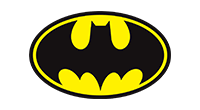News

It's honestly incredible that a milestone of superhero cinema is already celebrating its 20th anniversary. It still feels like we're living in the “post-Dark-Knight-Trilogy era” — that’s how much impact these three films had on what it means to translate comic books into movies and redefine the modern action film. The trilogy also played a major role in turning Christopher Nolan into arguably the most influential director of the 2010s and early 2020s. Today, he's mentioned in the same breath as Steven Spielberg, Stanley Kubrick, James Cameron, and Martin Scorsese. That certainly wasn't the case back in 2005.
At the time, Christopher Nolan was seen as a promising young indie director, who had just brought two top-notch films — »Memento« and »Insomnia« — to the screen, but he had no experience with large-scale blockbuster productions.
After Joel Schumacher's underwhelming Batman films, the franchise was considered scorched earth. In the wake of the massive success of »Bryan Singer's X-Men-series« and Sam Raimi's »Spider-Man« as well as »The Matrix«, Warner Bros. decided to completely reboot the franchise and set a new tone: A Batman grounded in reality and psychological conflict — heavily influenced by Frank Miller's comics.
With Christian Bale, known for his intense method acting, they found a raw Batman who captured the deep loneliness of the character. His role in »American Psycho« had already given him experience playing a dark double life as a high-society playboy. Equally strong and eccentric were the casting choices for his allies: Gary Oldman as Jim Gordon, Morgan Freeman as Lucius Fox, and Michael Caine as Alfred.
But… the Dark Knight Trilogy especially lives and breathes through its villains, and this was already clear in »Batman Begins«. Liam Neeson's Ra's al Ghul, as a terrorist mastermind with a twisted moral code, was a strong intellectual adversary — somewhat reminiscent of a Moriarty from »Sherlock Holmes«. And Cillian Murphy as Scarecrow was an absolute delight to watch — still one of my all-time favorite film antagonists. He probably only shares first place with Heath Ledger's Joker from the following installment. The fact that Cillian Murphy has since been involved in almost every Nolan project and eventually played the title role in »Oppenheimer« speaks volumes about how much Nolan values his work.
Of course, we have to talk about the music too. Prior to this, films of this scale were mainly scored with orchestral, neo-romantic compositions — with John Williams and Danny Elfman shaping the “Hollywood Blockbuster” sound for the two prior decades. But here, Hans Zimmer and James Newton Howard set a new standard, creating a soundtrack that was on the one hand catchy, unmistakable, and on the other highly affected and abstract. With the follow-up »The Dark Knight«, this was taken to the next level. Again, »Batman Begins« marked the beginning of a long-standing collaboration between Zimmer and Nolan.
On this anniversary, we remember the man who turned fear into his weapon. A film that made darkness and psychological rifts a sociocultural phenomenon. And was the beginning of a new era in cinema.
“It’s not who I am underneath, but what I do that defines me.”
Happy birthday, »Batman Begins«. 🖤🦇

This year's edition of the »State of Unreal« made one thing clear: with its new updates, the engine is once again making a major leap forward — particularly in terms of its relevance for open-world games. In such games, landscapes and NPCs must load continuously and successively, characters require expressive faces and animations, while the world itself should feel alive.
Especially exciting for gamers: the new features were demonstrated via the first gameplay/cinematic hybrid trailer for »Witcher IV« — the long-awaited new title from CD Projekt Red, marking their first collaboration with Epic Games. Fans got an initial look at the new witcher Ciri in action — and witnessed how seamlessly gameplay transitions into cinematic sequences. The fully integrated Metahuman system in Unreal 5.6 now creates incredibly realistic and expressive characters. Mount animations have been fundamentally reworked — Ciri's horse now moves with convincingly natural muscle motion. Thanks to the new Nanite Foliage system, it's now possible to zoom in as close as the pine needles on trees without increasing data volume.
Even based on this first trailer, it's safe to say that CD Projekt Red is poised to deliver another technical milestone with »Witcher IV« — just as they did with »The Witcher III: Wild Hunt« and, more recently, with »Cyberpunk 2077«. If the story ends up being just as immersive as in those two titles, the next standout blockbuster is all but guaranteed. Watch the trailer here:
https://youtu.be/Nthv4xF_zHU
From Wednesday night to Thursday, the »State of Play« showcase also took place, where the latest PlayStation titles were presented — highlights included trailers for »007: First Light«, »Pragmata«, »Nioh 3«, and »Final Fantasy Tactics – The Ivalice Chronicles«.

»From the World of John Wick: Ballerina« is set during the events of »John Wick 3« and tells the story of Eve (Ana de Armas), who is trained as an assassin by the Ruska-Roma organization – and who sets out to avenge her father’s death. The film, which initially began production under director Len Wiseman (»Underworld«), has had a turbulent production history. It was originally slated for release a year ago, but didn’t pass the scrutiny of John Wick mastermind Chad Stahelski, who went on to oversee extensive reshoots lasting up to three months. Lionsgate’s decision to place a review embargo on the movie — only lifted last night — sparked some concern. Indeed, some critics were disappointed, claiming the film adds little that’s new, though they still praised the solid action. Others, however, were thoroughly impressed and called it one of the best action flicks of the year. And let’s be honest: What actually matters here IS the action, the John Wick films have never been storytelling masterpieces. To get you in the mood, here’s the latest trailer:
https://youtu.be/yNN2PoilSp4
Things get a little bit deeper in »The Ugly Stepsister«, the feature film debut of Norwegian director Emilie Kristine Blichfeldt: This body-horror fairy tale tells the classic Cinderella story from the perspective of the ugly stepsister Elvira (Lea Myren). The movie offers stunning visuals, dark humor, grotesque moments, and bodily fluids aplenty. It’s a biting commentary on beauty standards — and definitely not a flick for the faint of heart. Widely praised by critics, the “feel-bad film” is often compared to last year's »The Substance« by Coralie Fargeat. We were already hooked by this excellently cut trailer from a few weeks ago:
https://youtu.be/5vZ1_Yxjwzs
We wish you — and ourselves — a great time at the movies, joining Eve and Elvira on their very different adventures.

The combination of human flaws and superhero mythology remains a popular theme at the moment, giving rise to scathingly satirical takes on current modern American society. Case in point: the trailer for season two of »GEN V«, the spin-off series from »The Boys«. Unlike many other spin-offs, the events in »GEN V« and »The Boys« directly influence one another – and that's once again clear in this trailer. But beware: light spoilers for »The Boys« season four are included here. Homelander's Supes First influence is clearly visible, and the looming quasi-civil war between the Starlighters and the superhero oligarchs at Vought sets the stage as Marie (Jaz Sinclair – now officially known by her superhero name Bloodbender) and her crew return to Godolkin University. Expect more blood, brutality, and pitch-black satire – and yes, a beer pong game involving a miniaturized Little Cricket (Lizze Broadway) gives us a full taste of this twisted world. New to the cast is Hamish Linklater as the mysterious new dean of Godolkin. Sadly, Chance Perdomo, who played Andre, will not return, as he tragically passed away in a motorcycle accident in 2024. »GEN V« season 2 premieres September 17 on Amazon Prime Video:
https://youtu.be/EUuaUlHbb-E
We're also hyped about the upcoming season of the blood-soaked peace warrior »Peacemaker«, the »The Suicide Squad« spin-off. The absurd juxtaposition of John Cena's brilliantly portrayed avenger makes this show a true highlight of the modern superhero genre. Peace at any cost... The show's opening sequence is one of the most iconic sequences of all time, and the signature dance also reappears in the newly released hype-filled sizzle reel for season two. It's a strong reminder of how much humor fuels this show – both on-screen and behind the scenes – and how James Gunn envisions his DCU: as a diverse ensemble of unique characters. Crossover moments with »Superman« have already been confirmed. By the way, with an IMDb rating of 8.3 out of 10, »Peacemaker« (like »The Boys«) is one of the highest-rated superhero series available today. Watch the brilliant sizzle reel here:
https://youtu.be/OacYmUTC7Aw
Season two premieres on August 21 on HBO Max, just after the »Superman« film hits theaters. A German release date hasn't been announced yet, but due to current exclusivity deals, we expect a simultaneous release on WOW and Sky – not months later on RTL+ like season one.
We've also got some new movie trailers this week. We've already covered M3GAN 2.0, and we're increasingly on board with the idea that the filmmakers have embraced turning Megan into the lead of a full-blown action comedy. The new trailer looks delightfully over-the-top, and Megan's snarky robotic teen persona is just plain fun. Watch the trailer:
https://youtu.be/1FeiTZMtwLA
Keanu Reeves as a depressed angel alongside Seth Rogen in a comedy directed by Aziz Ansari? We didn't see that coming – but it definitely caught our attention. The feel-good trailer for »Good Fortune« has shades of »Wings of Desire«, »Good Omens«, some Wes Anderson, and a 90s feel à la »The Truman Show«. And with »Ballerina«, featuring Keanu in his iconic role as John Wick, hitting theaters tomorrow, it's fascinating to see him in such a radically different part – and yet, he's unmistakably Keanu. The hair is perfect.
https://youtu.be/o34WOE1a8aQ

The brand had settled into its comfort zone, and new licenses were rather rare. The last notable additions were probably Pennywise from »It« (by Andy Muschietti), which will likely remain a standalone, and »John Wick« (in the latter case, if »Ballerina« has a successful launch this week, we might also expect an Ana de Armas as Eve figure).
The announcement that Hot Toys had secured the »James Bond« license caused quite a stir some time ago. Yesterday, Daniel Craig finally made his debut as the first 007 figure. Here's to a double vodka martini - shaken, not stirred, of course (which, as we know from »Casino Royale«, Craig as Bond isn't interested in). You can find Her Majesty's secret agent already listed for pre-order in our shop. We expect Hot Toys to soon launch the next Bond, James Bond, into the 1/6 race...
Then a few days ago, there was another big buzz! Hot Toys collectibles for the HBO series »The Last of Us« were announced on the Sideshow website. Naturally, we're expecting one-sixth-scale figures, not Cosbabies.
We're very pleased that things are getting a bit more lively at Hot Toys again. Perhaps it's because the air on Olympus has become a bit thinner due to competition from InArt and other manufacturers, and Hot Toys is once again putting more effort into acquiring new licenses. In any case, we as fans will benefit from this 😜.

Even then, the current Bishoujo release - Sadako - is very special, and that's why we decided to declare it as our 💥 Product of the Month 💥 June 2025. Sadako is the scary girl from the J-horror movie par excellence: »Ring« (based on the novel of the same name by Koji Suzuki and filmed in 1998 by director Hideo Nakata). If you know anything about Japanese horror movies, then you should almost certainly know this film. »Ring« is about an enchanted video cassette. Anyone who sees the disturbing content bites the dust after seven days, and Sadako takes great pleasure in crawling out of the TV with her long hair hanging down her face in order to realize this death curse.
When the film came out in 1998, it didn't take long for it to become well-known far beyond the horror community. Sadako's look draws on the motif of Yūrei, female vengeful spirits with white robes and long black hair, rooted in Japanese folklore. »Ring« impressively transports this image into the present. In the following years, inspired by the success of Sadako, a number of movies were released that robbed us of our sleep with scary and vengeful girls.
Kotobukiya is now celebrating this piece of horror history by including this character in the Bishoujo series. But don't worry, even a beautiful Sadako still is creepy enough. So in a way you get the best of both worlds ;).
If you like it even scarier, you can use the enclosed alternative face part, which shows her with a different eye. This gives Sadako a more aggressive and threatening touch. And if you want the scariest option, you can attach the optional hairpiece which covers Sadako's face completely!
The PVC statue shows Sadako in a seductive pose, hovering over a stack of video cassettes. Her unconscious telekinetic powers ensure that some tapes lift off the ground. The packaging also includes an unrolled VHS tape, which can be arranged as desired. This way, you can give your collectible a very individual look without much effort.
Kotobukiya is celebrating the 15th anniversary of the Bishoujo series with Sadako. We want to join the celebrations and therefore choose the epitome of J-Horror as the 💥 Product of the Month 💥 June 2025.

On the night from Saturday to Sunday, Netflix hosted the major TUDUM live event, which was streamed simultaneously worldwide and in which the streaming service promoted its upcoming attractions with plenty of star power, show performances, and new teasers and trailers.
Sofia Carson hosted the show. Nothing was left to chance; there was no room for spontaneity, and everything was, as always, "amazing," and the host was totally "excited." The entire event, including the hysterically applauding fans, seemed superficial and somewhat antiseptic. The only one who conveyed a touch of authenticity with his likeable, calm manner was Guillermo del Toro.
However, here are the topics that caught our attention:
Rian Johnson's announcement of »Wake Up Dead Man: A Knives Out Mystery« definitely deserves a mention among the films. The presentation was supported by many stars, including Josh Brolin, Cailee Spaeny, Kerry Washington, Jeremy Renner, Glenn Close (in a clip), and Daniel Craig. This, too, was scripted, of course, but had a nice rhythm thanks to the repetition of the phrase "And that's where you are wrong!" with which each actor began their lines, followed by a classic crime-reveal flourish. Streaming starts on December 12, 2025.
https://youtu.be/sRqU2276eaQ
Friends Ben Affleck and Matt Damon are finally back together in front of the camera in the thriller »The Rip«. The trailer is not yet available on YouTube. The release date is January 16, 2026. We're looking forward to the two stars' joint appearance.
We didn't like the trailer for »Happy Gilmore 2«. What's funny about Adam Sandler getting a golf ball in his balls? But never mind, no other genre is as dependent on personal taste as comedy. What's a knee-slapper for one person only makes others shrug their shoulders.
https://youtu.be/YKzRPFvky9Y
The aforementioned Guillermo del Toro, supported by Oscar Isaac and Mia Goth, presented the first trailer for »Frankenstein«, a film we're already very excited about and which Netflix will bring us in November.
https://youtu.be/x--N03NO130
In the series category, there was the trailer for the final season of »Squid Game«.
https://youtu.be/zgGTVaG2UiQ
Chopper makes his debut in season 2 of »One Piece« and introduced himself in a clip.
https://youtu.be/rT0r90co_EA
The premiere dates for season 5 of »Stranger Things« have been announced. Since it's the final season, Netflix is spreading the show out a bit. The first block will air on November 27th. Block 2 will then begin on Boxing Day. The finale will air on January 1st, 2026.
https://youtu.be/QlYrNC_1Xmk
For »Wednesday«, the streaming service showed the first six minutes of the 2nd season, presented by Jenna Ortega and co. The finale of the show was rounded off with a performance by Lady Gaga, who makes a guest appearance in the series. »Wednesday« will also be released in two parts, on August 6th and September 3rd.
https://youtu.be/Lxa8poQYRtc
Which film or series are you most looking forward to?

As a Nightfarer, you enter the epic »Elden Ring« universe, the transitory land Limveld to be exact, to hunt one of the Nightlords. Up to three players can participate in battles against dark creatures. If you join forces in the fight and skillfully combine your abilities, your team spirit will work to your advantage. Thus, »Elden Ring Nightreign« provides the ultimate co-op experience. In terms of atmosphere, even the trailer shows that the game is in no way inferior to its predecessor:
https://youtu.be/AWrXpJQBJF0
Incidentally, a few days ago, it was officially announced that there's an »Elden Ring« film in the making, so we are wondering what else we can expect from this franchise.
Are you ready to join this dark adventure as a Nightfarer? And what do you think about the film adaptation?

Babymetal were formed in 2010 – the three original members were just between 10 and 12 years old – and emerged from Japan's idol pop scene, where careers typically end after junior high school. However, thanks to a rapidly growing hype at international anime conventions and rock festivals, and the strong personal fan connection within the global metal and fantasy communities – where musicians are far more than just interchangeable faces – the group was soon lifted out of the rigid idol system. This allowed Babymetal to continue as a stable lineup. Today, Suzuka Nakamoto (vocals) and Moa Kikuchi (shouts & dance) have spent 15 years together on stage, representing their »Fox God«. In 2023, Momoko Okazaki joined as the second shouter and dancer, completing the trio.
Watch the wild music video here – it has racked up over a million streams within just a few hours:
https://youtu.be/KEMVgy51kPE
A very specific kind of cute, definitely niche – and absolutely a matter of taste! 🤘🦊😸

Sven is joined by our special guest Jasmin, who didn't just bring numerous pictures and videos from the Star Wars Celebration in Tokyo, but above all, exciting stories - amazing announcements from the Star Wars universe, interesting impressions from the exhibition halls, and, of course, hot new collectibles 🔥!
The two also talk about Jasmin's cosplay, various other conventions, and the best Star Wars shows. And you can even look forward to three great goodies 🎁.
Grab a glass of Blue Milk and let us entertain you - for the love of Star Wars:
https://youtu.be/ZvR5dESsAOk

For the first time, the worlds of the cult classic »Karate Kid« (1984), the modern series continuation »Cobra Kai« (2018–2025), and the 2010 reboot starring Jackie Chan come together. Chan once again takes on the role of the eccentric kung fu master Mr. Han, impressively showing that even at 71, he's still got it when it comes to action. Together with Daniel LaRusso (Ralph Macchio), he forms a wise yet chaotic coaching duo. The two take on the withdrawn teenager Li Fong (Ben Wang) – a student with talent, trauma, and a rather large shadow he must overcome.
»Karate Kid: Legends« tells a new, standalone story, while staying deeply rooted in the mythos of the series: discipline, self-discovery, and the eternal struggle between inner strength and external pressure. Li isn't just fighting with his fists, but with grief, exclusion, and the question of whether one can truly find peace without fighting. Amid teenage romance, jealous and violent exes, an underground tournament, and pizza-parlor philosophy, a modern martial arts drama unfolds. One can expect that »Karate Kid: Legends« doesn't just bring new action, but also delivers a hefty dose of nostalgia and the necessary sprinkling of fan service – with extra cheese 🍕😆!
Early reviews are somewhat mixed. So it's up to you to see for yourself – in cinemas starting tomorrow 🥋!

The hype surrounding »Andor« season 2 was huge for us, too, so it was a no-brainer that Cassian should be immortalized in our postcard collection. For this photo, Robert let his imagination run wild and sent the hero on an undercover mission as an ISB officer. He used Stormtroopers and K-2SO from Hasbro's Black Series, as well as a kitbash consisting of a Director Krennic figure and a Cassian head, which he staged in a diorama.
If you want to see more epic toy photos, be sure to check out Robert on Instagram 🤩:
https://www.instagram.com/97_parsecs_photography/


Imagine the first 100 things that come to mind when you think of the 80s and early 90s, throw them into a blender, and make a smoothie out of it - that's pretty much the concept behind »Kung Fury«, a 30-minute Swedish short film that dropped on YouTube in May 2015 and hit 10 million views within just a few days.
Exactly ten years after its release, this film - and the bizarre story behind it - is back in the spotlight. But let's start at the beginning:
David Sandberg is a Swedish filmmaker who quit his job in advertising in 2012 to work on footage for an 80s-trash-inspired action comedy in his home studio. He invested €5,000 to produce a trailer for a crowdfunding campaign. It did so well that it reached its €200,000 goal within a week and ultimately raised over €630,000.
The entire film was shot on green screens, and due to the limited budget, the team, for example, had only one police costume for 30 extras - so one scene was simply shot 30 times.
When the film finally premiered, it became a viral hit. Its absurd story, weird setting, its look and feel, and of course the involvement of David Hasselhoff, sparked just the right kind of nostalgic feelings - somewhere between 80s buddy-cop movie and 90s toy commercials.
You can still check out this wild trip here and we absolutely recommend it!
https://youtu.be/bS5P_LAqiVg
It didn't take long for a classic beat 'em up game titled »Kung Fury: Street Rage« to be released. Exactly one year after the film, a sequel - or rather a soft remake - was announced. This time, several major producers and production companies got involved, leading to a significantly larger budget of $34 million and a clear goal: to make a full-length feature film.
What happened next reads like the script of a film itself: »Kung Fury 2« (or »Kung Fury: The Movie«, as it's officially called now) was set to be even bigger, wilder, and more absurd - with full-on Hollywood power! Michael Fassbender plays FBI agent Colt Magnum with a perfect mullet, alongside Alexandra Shipp, once again Jorma Taccone and David Hasselhoff, and none other than Arnold Schwarzenegger as the President of the United States – „out to kick some Nazi ass“.
Filming wrapped in 2019, the budget was secured, and the vibe? Even crazier than the original! Alongside returning director Sandberg (once again starring as the title hero), names like Seth Grahame-Smith and »Boy Kills World« writer Tyler Burton Smith added fuel to the fire. The project had all the ingredients to become the ultimate cult hit.
But then everything came to a halt. A murky financing deal with Chinese company Creasun led to chaos. Huge portions of the budget, especially for the complex VFX, never materialized, and so the film stalled. Since 2020, the production has been stuck in legal limbo. And even though post-production wrapped in 2024, there's still no official release date.
Just a few days ago, though, a 10-minute internal promo clip suddenly appeared online - totally insane, and confirmed as legit by director David Sandberg himself. However, he expressed regret over the leak, since it reveals several key plot points. In the clip, neon explosions, dinosaurs fighting Nazis, and the return of the Kung Führer all scream: »WE NEED SOME… ACTION!«. If you don’t mind spoilers, the video is GENIUS!
https://youtu.be/sDD6izSZInw
The film is still officially „trapped“, but maybe - just like with »Deadpool« back in the day - this leak will lead to a happy ending for the most absurd action film of our time.

Directed by Dean Fleischer Camp (»Marcel the Shell with Shoes On«), the remake features a mix of real locations, CGI, and a young cast. Young actress Maia Kealoha takes on the role of Lilo. Stitch himself is, of course, brought to life via computer animation – but Chris Sanders once again lends his voice.
Thematically, the film remains true to its origins: it's about family, togetherness, and the feeling of being different – packaged in an entertaining mix of heart, humor, and action. You can see in cinemas today whether the new version can match the charm of the 2002 original.

The HBO series »IT: Welcome to Derry« dives deep into the terrifying origins of Pennywise the Clown, acting as a prequel to »IT« and »IT Chapter Two«, based on Stephen King's iconic novel. Bill Skarsgård reprises his chilling role, with the story set in 1962, 27 years before the events of the first film. And there's more to come: two additional seasons have already been announced, jumping back another 27 years each - to 1935 and 1908. The nine episodes are expected to premiere this fall on HBO and Max.
Watch the eerie first trailer here:
https://youtu.be/6HG-wsRsg8s
Fans have long expected a sequel to the 2016 animated sensation »Zootopia« with the unlikely crime-fighting duo Judy Hopps (voiced by Ginnifer Goodwin) and Nick Wilde (Jason Bateman). In part 2, they are now occupied by the shenanigans of the slippery reptile Gary De'Snake, voiced by ever rising star Ke Huy Quan.
Disney's newly released teaser (or rather, techno-music-visualizer) is so wonderfully bizarre that it's probably safe to assume this sequel will once again be a wild ride for audiences of all ages:
https://youtu.be/xo4rkcC7kFc
The film is set to hit theaters in November.
The Tim Burton series phenomenon »Wednesday«, centered around the title character played by Jenna Ortega, returns with part 1 of its second season on Netflix starting August 6th. Part 2 will follow just one month later on September 3rd, each part consisting of four episodes. A new preview trailer, which feels more like a behind-the-scenes featurette, gives us a glimpse into the horror-comedy show's return:
https://youtu.be/XWQlSo6eBNw
Notably, the entire Addams Family will play a much more central role this season, with Pugsley (Isaac Ordonez) now attending Nevermore Academy himself, complete with emerging superpowers. Also joining the cast is Joanna Lumley as Grandmama, the delightfully eccentric grandmother of Wednesday.
Adult animation continues to rise, and »Predator: Killer of Killers« is jumping right on the trend. This animated anthology film features three legendary warriors - a Viking woman, a ninja, and a WWII Allied pilot - who all become prey to the galaxy's most feared hunter. With a painterly visual style and deliberately reduced frame rate, the film is reminiscent of »Arcane« and graphic novel art:
https://youtu.be/fbddYji1F8s
The movie hits Disney+ and Hulu on June 6th.
Last but not least, we have a new trailer from the world of dinosaurs … and to be honest: it looks seriously exciting! While the »Jurassic World« trilogy started to fizzle out toward the end, this new entry appears to bring back the thrill. That's likely due to director Gareth Edwards, who already proved with »Rogue One: A Star Wars Story« and »Godzilla« that he knows how to bring epic scale back to sluggish blockbuster franchises, and who seems to fully understand how to depict sheer magnitude. His latest film »The Creator« was also a visual feast of grand sci-fi cinema. We're definitely intrigued! The cast - Scarlett Johansson, Mahershala Ali, and Jonathan Bailey - is top-notch. The only odd choice: introducing a new six-legged mutant Tyrannosaurus Rex as the new villain. You can't beat the classics, just bring us our beloved T-Rex.
Here's the spectacular trailer:
https://youtu.be/6m1eOoUoVao
The film hits theaters this July.

Among the new arrivals, of course, are figures and accessories for the 1/6th scale collectors among you: bodies, animals, furniture, and more! We also got a whole load of great 1/6th scale complete figures, such as Geralt of Rivia from »The Witcher« and Vecna from »Stranger Things« by threezero, the new »Bitten« zombies from Asmus Toys, mermaids from TBLeague, the »Ruthless Blade« recreations by Beautiful Chemistry, and other fantastic collectibles 😍🥳.
We're also restocking our statues again: Amazing new items like the 1/3 Harley Quinn Who Laughs and the 1/6 Velociraptor from Prime 1, as well as the beautiful Willow Deity statue from PIJI Studio, have found their way to our warehouse after a long journey 🚢.
All new additions will now be carefully checked before we start shipping them to pre-orderers next week and release the available pieces in the shop. So check back every now and then and secure the best collectibles!

The latest chapter of the legendary action series sends Tom Cruise, in his iconic role, on a mission with his team to track down the artificial intelligence known as "The Entity". It has taken control of global communication systems and nuclear weapons, posing a grave threat to worldwide security ...
Fans of gripping, adrenaline-fueled action cinema definitely won't be disappointed with »Mission: Impossible - The Final Reckoning«. And of course, Tom Cruise once again outdoes himself with his stunts - this time as a pilot flying an aircraft. The trailer already gives you a glimpse of the spectacle:
https://youtu.be/fsQgc9pCyDU
Even though the film, as the title suggests, is conceived as a possible conclusion to the series, it remains unclear whether it will actually be Hunt's final mission.

https://youtu.be/1I15ttCedfY
Andy and his visually impaired half-sister Piper move into a cozy country house, where their new foster mother Laura lives. At first glance, she appears friendly and life-affirming. Besides her, there is the apathetic boy Ollie, who is more than a little unsettling to the siblings. When the two witness a sinister ritual, they realize the threat behind Laura - but it's already too late for an escape.
After »Talk to Me«, »Bring Her Back« is the second film by twin brothers Danny and Michael Philippou. The lead role is played by Sally Hawkins, who is known for her role in »The Shape of Water«, among others. The film will be released at the end of May or in early August, depending on the location.

SUPERMAN
Last night, we got a better look at what to expect from James Gunn's »Superman« thanks to a second trailer. And it's already clear that we're in for the typical Gunn blend of grounded humor, exaggerated characters, arguably too much content for a single film, and very human (or alien) emotions. Especially the relationship between Clark Kent/Superman, played by David Corenswet, and Lois Lane, portrayed by Rachel Brosnahan, comes through strongly in the opening scene. As a couple, they radiate a deep familiarity, yet during an interview, Lois asks hard-hitting questions without sparing her partner. It becomes apparent that Clark is somewhat naive and not fully aware of the responsibility that comes with being a "godlike" figure. It's great to see how effortlessly Corenswet shifts his tone and demeanor when transitioning from Clark to Superman - a scene that feels very reminiscent of Christopher Reeve. One true goosebump moment in the trailer is when John Williams' iconic melody kicks in, in a monumental new arrangement, accompanied by the voices of the two most important men in Clark's life: his adoptive father Jonathan Kent (Pruitt Taylor Vince), offering words of encouragement, and his greatest adversary Lex Luthor (Nicholas Hoult), whose words drip with contempt. »Superman« will hit theaters as the DCU's theatrical debut this July. Watch the trailer here:
https://youtu.be/Ox8ZLF6cGM0
IRONHEART
Now let's switch from DC to its biggest competitor, Marvel, and from the start of a new superhero universe to the iron heart of a well-established one. »Ironheart«, the next Disney+ series from the MCU, is just around the corner. Although the show, created by Chinaka Hodge (»Snowpiercer«) with executive producer Ryan Coogler (»Black Panther«, »Sinners«), is set to hit screens this June, we've only seen leaks so far - no official footage until now. The series spent a long time in release limbo, especially due to the screenwriters' strikes, and had already wrapped filming in November 2022, which led to doubts it would ever see the light of day. But now it's finally here, and the trailer promises plenty of excitement and fun. After the brilliant, flying armor building Riri Williams returns from her trip to Wakanda in »Black Panther: Wakanda Forever« to her hometown of Chicago, she teams up with the ambiguous character Parker Robbins, a.k.a. The Hood. The trailer already suggests that this character, played by Anthony Ramos, could be one of the show's highlights. Much like Bob from »Thunderbolts*« recently, Marvel finally seems to be getting the hang of creating three-dimensional villains.
So, here's the trailer for »Ironheart«:
https://youtu.be/WpW36ldAqnM
NOBODY 2
Bob Odenkirk returns in August as suburban dad and former assassin Hutch, and this time, the bad guys won't even let him relax on a family vacation. Odenkirk's deadpan style, combined with »John Wick«-like action, makes this film series the perfect popcorn experience. The new trailer - this time featuring an expanded family cast including a grandfather (played by Christopher Lloyd) - makes it clear that the movie doesn't take itself too seriously and is just here to deliver fun.
Check out the trailer for this punch-packed sequel:
https://youtu.be/-5X2pt95cIo


















































